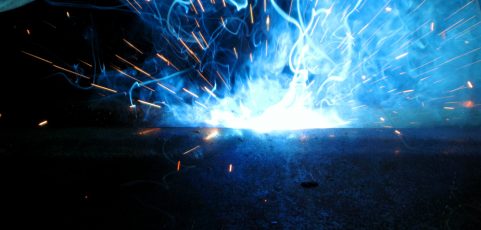Nothing is more valuable than the lives of your employees, not to mention the property you’ve worked so hard to build and maintain. Understanding the properties of combustible gases you use or come in contact with is important to reduce the risk of sudden fires or explosions. For your reference, we’ve assembled a list of the most widely known combustible gases to help you better understand common hazardous gases in your facility or warehouse.
What Makes a Gas Combustible?
Combustion, in short, is when a substance reacts with oxygen from the air and transfers energy to surroundings as light and heat. Compounds or liquid gases that exceed their flash point (minimum temperature for a liquid gas to ignite in the air) are combustible and can cause an explosion. It’s important to have an accurate detection system to monitor the levels of combustible gases in your air. Learn about the most common types of combustible gases your facility needs to guard against.
All of these substances are in the gaseous state at room temperature. Some are heavier than air, some lighter, and your combustible gas detectors should be mounted accordingly in your facility.
Acetylene
Flashpoint: -18.15°C
Commonly used in portable lighting, welding, and cutting, acetylene is a hydrocarbon gas that is lighter than air and fortunately for detection, has a characteristic smell. It is produced by the chemical action of water on calcium carbide and is an appropriate fuel gas for a number of applications.
Butane
Flashpoint: -60°C
The term butane can refer to the alkane n-butane or to its other isomer, isobutane. Commonly found in cooking fuels or blended with propane for commercial use, butane gas is a colorless and odorless gas that is highly flammable.
Ethylene
Flashpoint: 34°C
Deemed as one of the most important manufacturing chemicals, ethylene is a building block for most plastics, antifreeze solutions, and solvents. It also acts as a plant hormone and can aid in the ripening of fruits and flowers.
Pro Tip: Advanced gas detection systems support interchangeable catalytic bead and infrared sensors, enabling users to easily switch between technologies to most rapidly detect the target gas.
Methane
Flashpoint: -187°C
Methane is the main ingredient found in natural gas. From making fabric, plastic, anti-freeze, fertilizer, and paper materials to powering homes, methane gas is one of the most widely used combustible gases.
Propane
Flashpoint: -156°F
Commonly used for space or water heating, propane gas is a nontoxic and colorless liquid gas. In efforts to decrease air pollution, propane has become a popular substitute for fuels such as gasoline due to its low concentration of pollutants.
Propylene
Flashpoint: -107.78°C
Due to its combustion efficiency, propylene gas is a colorless fuel gas that has a naturally pungent smell. Like propane, it is a nontoxic and clean alternative to gasoline. Its doubled bonded properties give it an advantage over propane, giving it the ability to burn hotter in industrial processes.
Guard Against Combustible Gases
Gas detection is crucial in environments where combustible gases are found, particularly industrial and commercial manufacturing facilities. GDS Corp offers customized gas detection systems for your business, regardless of your size. With accurate detection and user-friendliness, you can rely on our products to keep you safe long term.
Do you regularly work with combustible gases? Connect with our experts to find the best solution for your environment.

